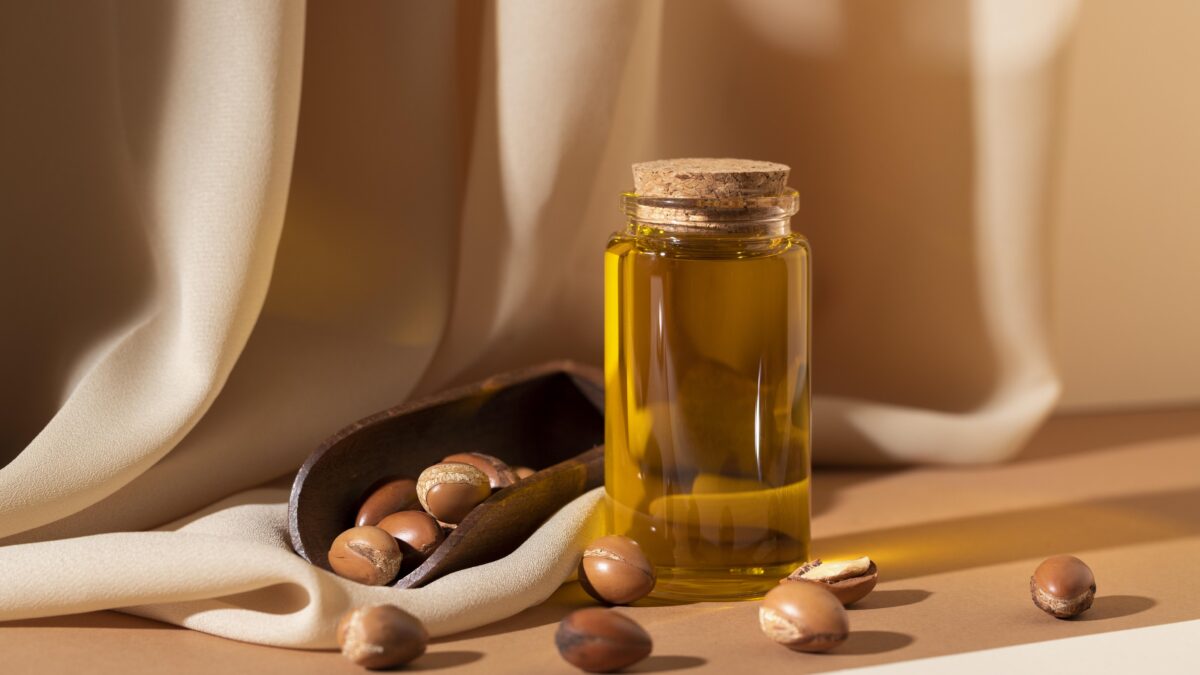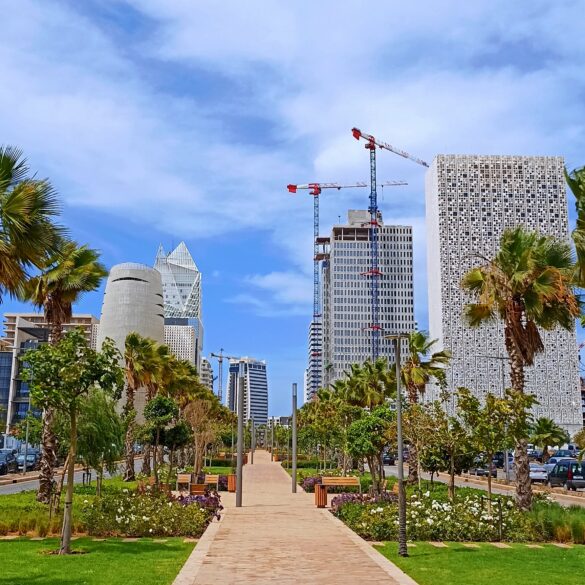Everything You Need to Know About the Miracle Tree and Its Precious Oil
By Adnane Benjelloun, Hicham Abouhas, Imane Zaim Idrissi, Mohamed El Mhaini & Sara Hanif

The Mystery of the Argan Tree
Native to Morocco’s mid-southern regions, the argan tree is deeply rooted in the country’s culture, ecology, and economy. It is the second most common fruit-bearing tree after the olive, especially abundant in regions such as Agadir, Taroudant, and Essaouira.
Since 1998, UNESCO has recognized the argan forest as a biosphere reserve. The Souss region alone covers around 800,000 hectares—over 14% of Morocco’s total forested land. While small clusters of the tree also grow in Algeria and Mauritania, Morocco remains the heartland of argan cultivation, producing 73% of the world’s supply.
Other countries like Israel, Spain, and Mexico have attempted to grow argan trees, but none can match Morocco’s climate and soil conditions. As Moroccans and researchers begin to revalue this ancient species, efforts to preserve and sustainably harvest argan continue to grow.
The Art of Argan Oil Extraction
In the village of Imin’tizeght near Tafraout, Aicha Taboudrart and her cooperative harvest argan fruit in August, waiting for the ripe ones to fall naturally. The outer pulp (tafyecht) is removed and fed to livestock, and the hard shell is cracked by hand to reach the precious nut inside.
There are two types of argan oil:
- Cosmetic Oil: The nuts are not roasted, then ground in a traditional stone mill or press. Cold water is added gradually, and the paste is kneaded until a rich, whitish oil is extracted.
- Culinary Oil: The nuts are lightly roasted for a nutty aroma, ground, and mixed with measured amounts of water. The resulting thick paste is squeezed until the golden-orange oil separates.
Health Benefits of Argan Oil
Argan oil is packed with nutrients—Vitamin E, essential fatty acids, and antioxidants. Among its many benefits:
- Boosts immunity
- Reduces cholesterol
- Fights inflammation and cancer cells
- Heals wounds and regenerates skin
- Acts as an anti-aging agent
In Moroccan cuisine, culinary argan oil is enjoyed with bread, often mixed with almonds and honey to create amlou, or drizzled over couscous, salads, and grilled fish.
Empowering Rural Women
Argan oil production in Morocco took off in 1995 with the Argan Grove Conservation Project. By 1996, the first women’s cooperative opened in Essaouira. Today, there are over 230 cooperatives employing more than 6,800 women.
These cooperatives not only provide steady income (around 75 MAD/day), but also transform the lives of women who previously had limited access to education or work. Many now handle financial transactions, customer service, and administrative roles—empowering a generation of rural Berber women.
Cooperatives follow strict hygiene and safety standards, using modern machinery to streamline oil extraction while preserving traditional methods.
How to Buy Genuine Argan Oil
With its popularity, counterfeit argan oil has become widespread. Here’s how to spot the real deal:
- Color: Cosmetic oil is golden yellow; culinary oil is golden brown with slight sediment.
- Texture: Should be smooth, not watery or sticky.
- Scent: Culinary oil has a nutty aroma; cosmetic oil smells light and earthy.
- Packaging: Always opt for dark glass bottles to protect it from sunlight.
- Source: Buy from certified cooperatives or Ecocert-certified shops where you can taste or test the oil.
- Price: Genuine cosmetic oil costs €8–16 for 50–150 ml. Culinary oil is cheaper, about €10 per liter.
Final Word
Once a rural tradition, argan oil has become a global beauty and health phenomenon. Whether you’re using it in your skincare routine or drizzling it on your salad, one thing is certain: argan oil is more than a trend—it’s a gift from nature, preserved and perfected by generations of Moroccan women.





